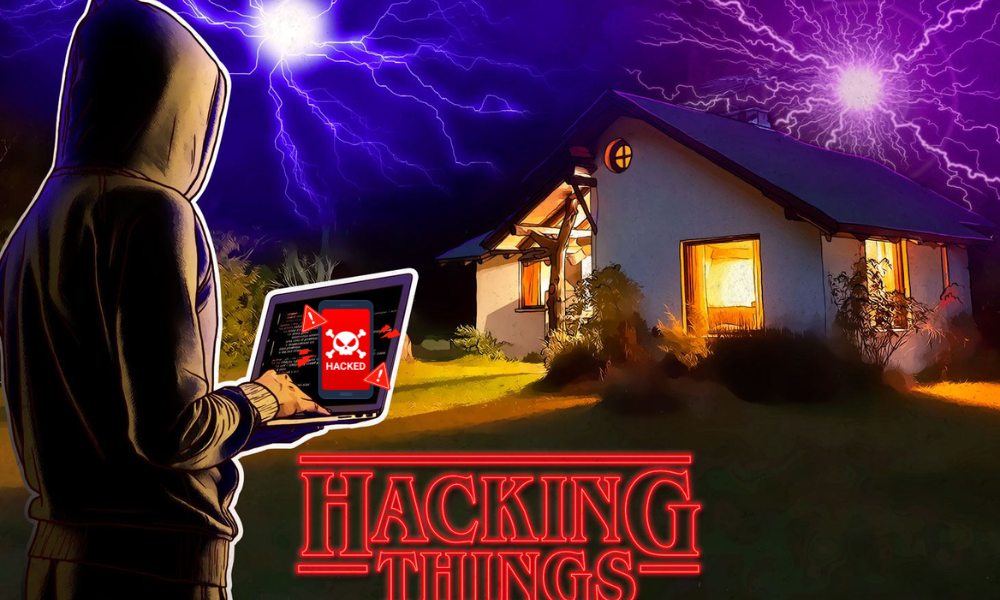The rise of smart home technology has made life easier, more convenient, and more efficient. From controlling lights and thermostats with a simple voice command to managing your security system remotely, smart homes have changed how we interact with our living spaces. But with all these advanced features, many homeowners are left wondering: Can smart homes be hacked?
The short answer is yes—like any connected system, smart homes are vulnerable to cyberattacks. While manufacturers take steps to secure their devices, the increasing number of connected devices creates opportunities for hackers to exploit weaknesses in your home network. In this article, we’ll dive into the risks of smart home hacking, how hackers can gain access, and the best practices you can follow to secure your smart home and protect your personal data.
Contents
How Can Smart Homes Be Hacked?
Smart homes are built around interconnected devices that communicate via the internet. This interconnectivity opens up several entry points for hackers to potentially gain unauthorized access. Here are the most common ways hackers exploit smart home systems:
1. Weak or Default Passwords
Many people fail to change the default passwords on their smart devices when setting them up. This is one of the easiest ways for hackers to gain access to a device or your entire network. Many smart devices come with factory-set passwords that are easily guessable. Hackers can use these default passwords to access your device or network and control it remotely.
To make matters worse, many people reuse the same passwords for multiple devices or accounts, making it easier for hackers to compromise other connected services.
2. Unsecured Wi-Fi Networks
Most smart devices rely on Wi-Fi to communicate with each other and the internet. If your Wi-Fi network is not properly secured, hackers can gain access to the devices on your network. Using WPA2 or WPA3 encryption is essential to protect your Wi-Fi from cybercriminals.
In addition, some users set up insecure guest networks that allow outsiders to easily connect to their home Wi-Fi without any password protection. This can create a potential vulnerability that hackers could exploit.
3. Exploiting Outdated Software or Firmware
Just like any other software, smart home devices need to be updated regularly to patch security vulnerabilities. If you fail to update your devices, they may be susceptible to attacks that exploit known weaknesses. Outdated firmware is a common target for hackers because many people neglect to install the latest updates.
Without regular updates, your smart devices could be easy targets for hackers, allowing them to gain control of your home systems.
4. Poorly Secured Cloud Services
Many smart home devices store data on cloud servers. For example, video footage from smart cameras or smart doorbells may be uploaded to the cloud for remote viewing. If the cloud service is poorly secured, hackers could gain access to your data, including personal videos, photos, or sensitive information.
In some cases, smart home services may not encrypt data properly, leaving it vulnerable to being intercepted or stolen.
5. Phishing and Social Engineering
Hackers can also use social engineering tactics to trick homeowners into providing access to their smart home systems. One common method is phishing—sending fake emails or text messages that appear legitimate in an attempt to steal login credentials. Once hackers gain access to your account, they can control your devices remotely.
For example, a hacker might send a fraudulent email asking you to “verify” your smart home device account, and when you click on the link, it takes you to a fake website designed to capture your username and password.

What Are the Risks of a Hacked Smart Home?
If your smart home is compromised, the consequences can range from inconvenience to serious security and privacy issues. Here are some of the risks you may face if your smart home is hacked:
1. Unauthorized Access to Your Home
A hacker could gain control of smart locks or security cameras, allowing them to enter your home without your knowledge. They might unlock doors or disable cameras, making it easier to steal valuables or even cause harm.
If your smart doorbell or security system is compromised, you could miss alerts about suspicious activity at your door or fail to respond to an emergency in time.
2. Loss of Personal Data
Many smart devices collect sensitive data, such as voice recordings, security camera footage, and location information. If hackers gain access to your smart home system, they could steal or misuse this data. For example, voice assistants like Amazon Alexa or Google Assistant might store personal conversations, which could be exposed or misused in a data breach.
Additionally, any personal files or sensitive information stored in connected devices could be accessed, leading to identity theft or fraud.
3. Compromised Privacy
If hackers can access your smart home cameras, microphones, or smart speakers, they may be able to eavesdrop on conversations and monitor your activities. This violation of privacy can be unsettling and dangerous, particularly if the attacker uses the information to exploit or harass you.
4. Control Over Your Smart Devices
In some cases, a hacker may gain control over all the connected devices in your home, such as thermostats, lights, appliances, and entertainment systems. They could turn your smart thermostat to an extreme temperature, causing discomfort or even damage to your home.
Hackers might also lock you out of your own devices, making it difficult for you to regain control. In extreme cases, hackers could disable your entire home network, causing widespread disruption.
How to Protect Your Smart Home from Hackers
While the risks of hacking are real, there are several steps you can take to protect your smart home and ensure that your devices remain secure:
1. Use Strong, Unique Passwords
One of the easiest ways to secure your smart home is by using strong, unique passwords for each device and account. Avoid default passwords and use a mix of uppercase and lowercase letters, numbers, and special characters. Consider using a password manager to store and generate complex passwords.
In addition, enable two-factor authentication (2FA) whenever possible to add an extra layer of protection.
2. Secure Your Wi-Fi Network
Your Wi-Fi network is the backbone of your smart home, so it’s essential to secure it properly. Use WPA3 encryption if available, and avoid using weak passwords. Set up a separate guest network for your smart devices, so they are isolated from your personal devices like laptops or smartphones. This can reduce the risk of hackers gaining access to your entire network.
3. Regularly Update Your Devices
Keep all your smart home devices and their software updated to the latest version. Most manufacturers release firmware updates to address security vulnerabilities. Set your devices to automatically update whenever possible, or manually check for updates at least once a month.
4. Encrypt Your Data
When using cloud-based services for your smart home devices, make sure that your data is properly encrypted. Use services that offer end-to-end encryption to ensure that your data remains private and secure from unauthorized access.
5. Be Cautious of Phishing Scams
Always be cautious when receiving unsolicited emails, messages, or phone calls that ask for personal information. Do not click on suspicious links or download attachments from unknown sources. Verify any communication you receive by checking directly with the company or service provider.
6. Disable Unnecessary Features
Many smart devices come with features that you may not need, such as always-on microphones or remote access. If you don’t need these features, disable them to reduce potential vulnerabilities. For example, turn off voice recording features on your smart speaker when not in use, or disable remote access to your security system if you don’t need it.
Can smart homes be hacked ?
Smart homes offer incredible convenience, but like all connected systems, they can be vulnerable to hacking if not properly secured. The risks of a compromised smart home range from unauthorized access and privacy violations to the loss of personal data and control over your devices. However, by following best practices like using strong passwords, securing your Wi-Fi network, regularly updating your devices, and being cautious of phishing scams, you can significantly reduce the chances of your smart home being hacked.
While the rise of cyber threats is a reality, smart home security continues to improve, and with the right precautions, you can enjoy all the benefits of smart technology without compromising your safety and privacy.



